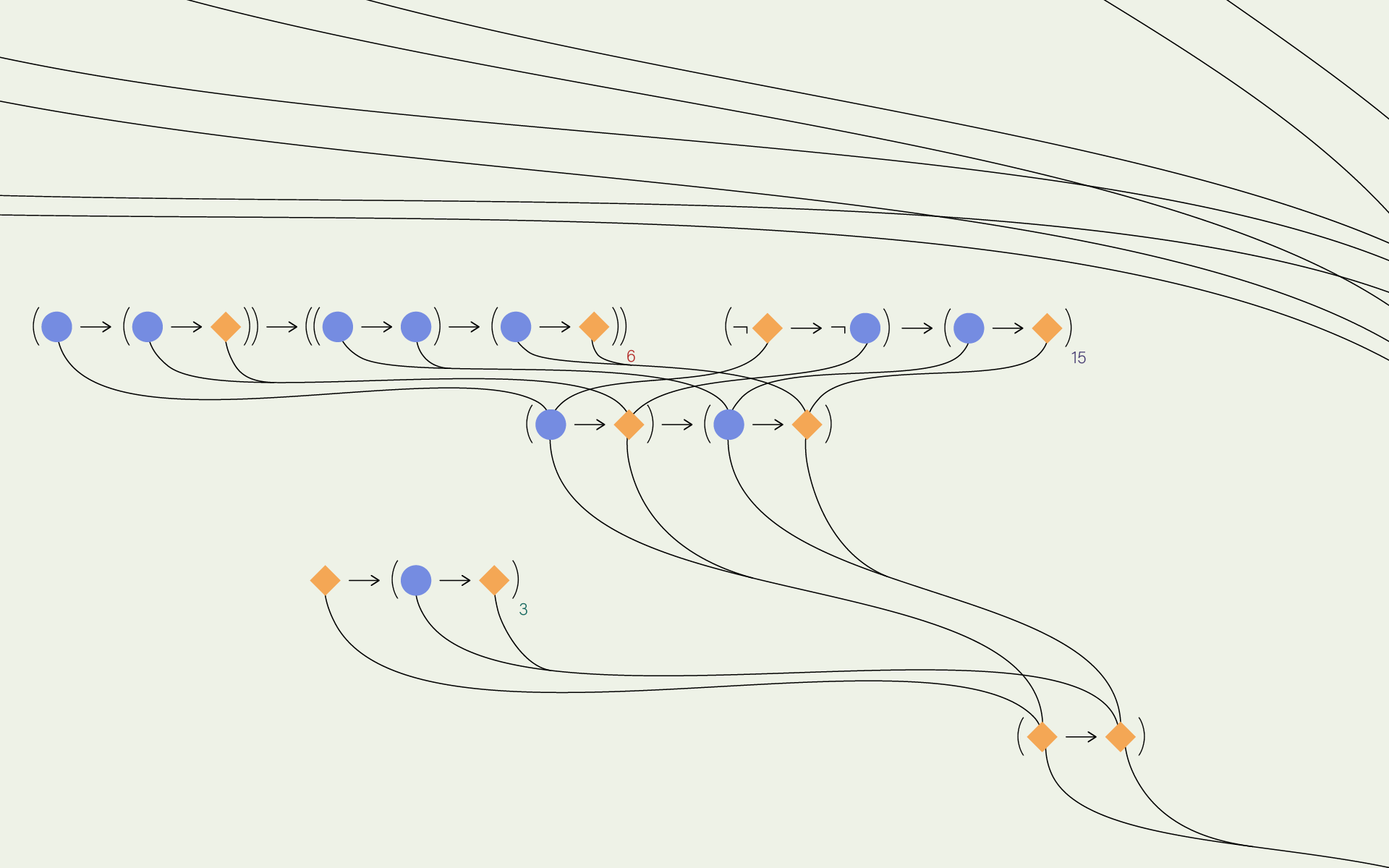Hilbert’s Axioms

Hilbert’s axioms consist of three tautologies — logical sentences that always return as true, no matter what the truth values of the letters are.
Hilbert’s axioms are:
A → (B → A)
(A → (B → C)) → ((A → B) → (A → C))
(¬A → ¬B) → (B → A)
Hilbert’s axioms are:
A → (B → A)
(A → (B → C)) → ((A → B) → (A → C))
(¬A → ¬B) → (B → A)
These axioms, along with the rule of Modus Ponens, construct Hilbert’s proof system for classical logic.
Letters can either be true or false — here, blue dots represent “true” letters and orange diamonds represent “false” ones. This visualization takes every possible combination for each axiom — a total of sixteen different possibilities — and traces their paths to truth.
Letters can either be true or false — here, blue dots represent “true” letters and orange diamonds represent “false” ones. This visualization takes every possible combination for each axiom — a total of sixteen different possibilities — and traces their paths to truth.



Hilbert's Second Axiom System
